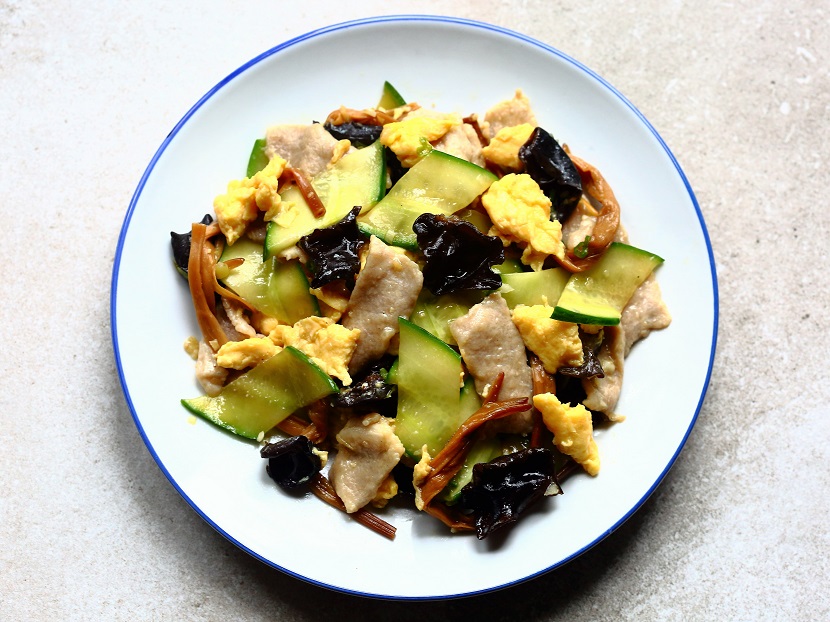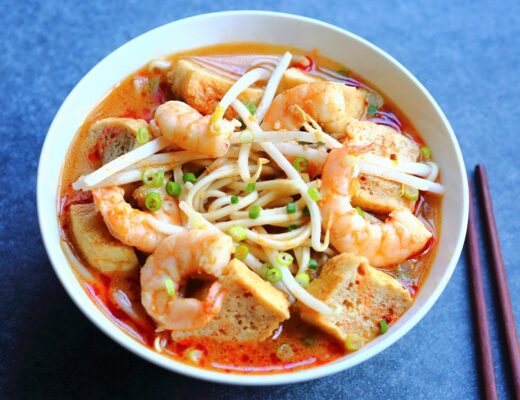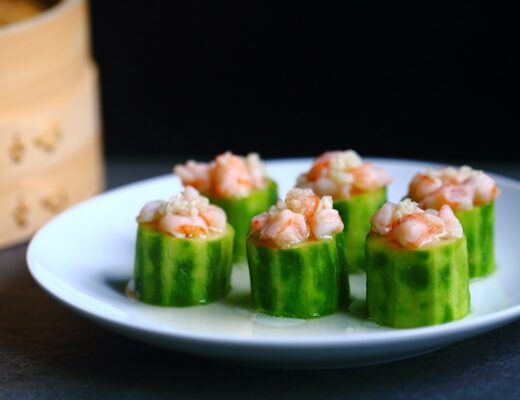Last Updated on May 5, 2021 by Simon Fan
Moo shu pork needs no introduction. It was brought to the US over half a century ago, first appearing on the menus of Chinese restaurants in the late 1960s. In its new home, it has evolved into numerous variations and is typically served with pancakes and hoisin sauce.
Originated in Shandong province, one of the top culinary centers in China, moo shu pork is called muxi rou (木樨肉) in Mandarin, so named because the scrambled eggs in the dish resemble muxi (木樨)—osmanthus flowers. The original version of the dish included pork, eggs, and bamboo shoots. As it was introduced to other parts in northern China, bamboo shoots, an ingredient not easily available in some places, were replaced by cucumber and daylily buds. Over time, the newer version became the most popular preparation in China. If you order muxi rou at a restaurant in China, you’ll notice right away that it’s quite different from the Westernized variations and it’s not accompanied by pancakes. By the way, the dish can also be written as muxu rou (木须肉).
My recipe below follows the popular rendition using pork, eggs, cucumber, and daylily buds—together they create a kaleidoscope of flavors, textures, and colors. If daylily buds are not available, use sliced or shredded carrot instead. If you like, you can serve the dish with pancakes as it’s done in the US. Check the recipe here for homemade pancakes, or use store-bought moo shu pancakes or flour tortillas.
Moo shu pork (木樨肉)
Serves 2
Ingredients
6 oz (170 g) pork tenderloin or pork loin (center-cut pork chops work too)
Velveting marinade
¼ teaspoon salt
1 teaspoon Shaoxing wine
1 tablespoon water
1½ teaspoons potato starch or cornstarch
⅛ teaspoon ground white pepper
½ English cucumber (about 6 oz/170 g)
⅛ teaspoon salt
⅙ oz (5 g) dried wood ear mushrooms, soaked in warm water until softened, about 30 minutes
⅓ oz (10 g) dried daylily buds, soaked in warm water until softened, about 30 minutes
2 large egg
⅛ teaspoon salt
1 teaspoon Shaoxing wine
1½ teaspoons soy sauce
⅛ teaspoon ground white pepper
2 tablespoons plus 1 teaspoon vegetable oil
1 scallion, thinly sliced
½-inch (1.3 cm) piece of ginger, peeled and minced
1 garlic clove, peeled and minced
Directions
- Cut the pork into very thin slices, preferably ⅛ inch (3 mm) or thinner and about 2 x 1 inches (5 x 2.5 cm). (It helps to place the pork in the freezer for 15 to 30 minutes to firm it up before cutting). In a bowl, stir to combine the pork with all the ingredients for the marinade. Let marinate for 15 minutes.
- Cut the cucumber diagonally into 1-inch (2.5 cm) sections. Cut each section, cut side up, into thin diamond-shaped slices. In a bowl, toss them with the salt to crisp them up; drain the cucumber right before cooking. Drain the soaked wood ear mushrooms, remove any woody parts, and tear them into bite-size pieces. Drain the daylily buds, and remove hard tips.
- Beat the eggs in a bowl and mix in the salt and ½ teaspoon of the wine. In a small bowl, combine the remaining ½ teaspoon wine, soy sauce, and pepper.
- Heat a wok or skillet over medium heat until hot, then swirl in 1 tablespoon of the oil. When the oil starts to shimmer, pour in the eggs and use a spatula to stir quickly and break them into small pieces until just cooked, about 30 seconds. Transfer the eggs to a plate.
- Heat the remaining oil in the wok over high heat until shimmering. Add the pork and stir-fry until it turns opaque and is almost cooked, about 45 seconds. Transfer the pork to a separate plate and leave the remaining oil in the wok.
- Add the scallion, ginger, and garlic to the wok and stir-fry briefly until fragrant. Add mushrooms and daylily buds, and toss for 30 seconds. Return the pork to the wok and add the cucumber and soy sauce mixture. Stir-fry until the ingredients are well combined and the pork is just cooked through, about 1 minute. Return the eggs to the wok and toss to mix. Turn off the heat and drizzle in the sesame oil. Serve right away.



